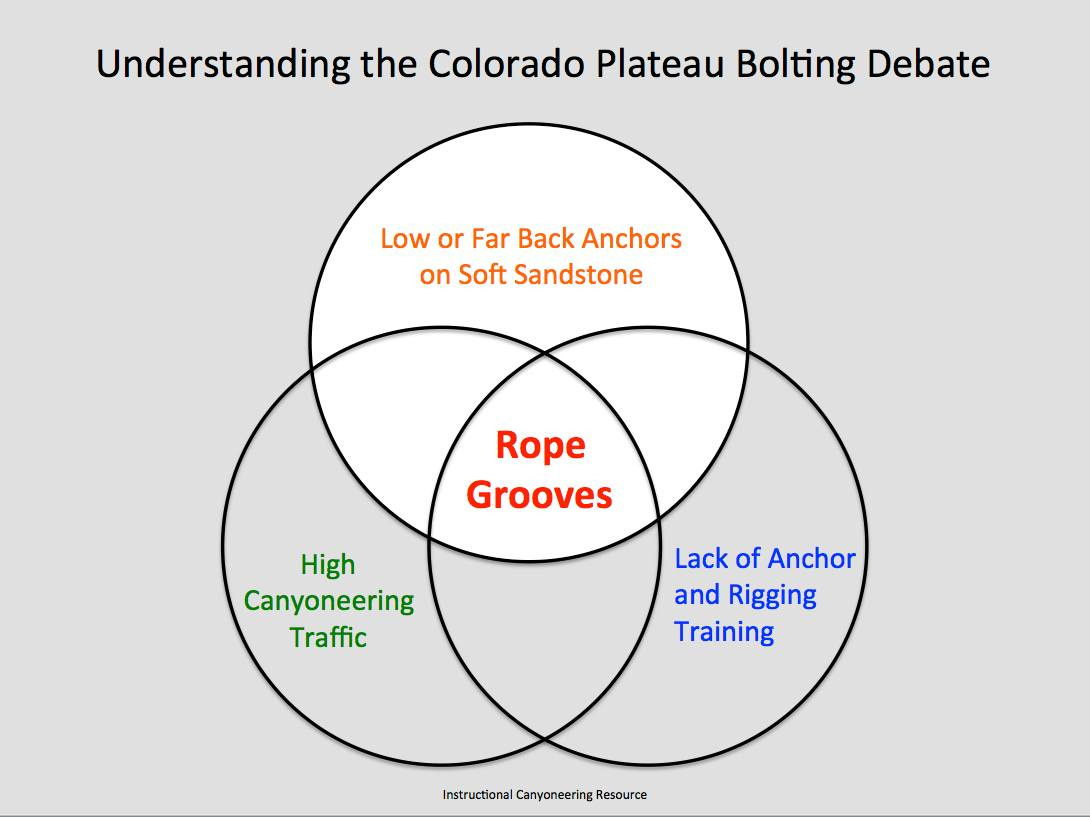Understanding the Colorado Plateau Canyoneering Bolting Debate
How popularity, lack of training and Leave No Trace ethics damage canyons
Originally published in Instructional Canyoneering Resource on 9/19/3023
Bolting Wars
If you canyoneer in the American Southwest, sooner of later you will come across chopped anchor bolts, and the debate on why bolts get installed, and why they get chopped.
Contributing Factors
It dawned on me that maybe writing about 3 issues at once may be too much to absorb for some. The 3 ingredients in the recipe that results in Rope Grooves and rock scarring are:
Low or Far Back Anchors in soft sandstone
High Canyoneering Traffic
Lack of Anchors and Rigging Training
Is the combination of these 3 is what causes the damage.
Not the far back natural anchors, deadmans or cairns alone.
A deadman anchor 10 feet from the edge, used 2 times a year is less of an issue for the next 20 years. Or is not an issue at all if ALL the visitors know how to rig Courtesy Rigging, or rig Retrievable Rigging (ghosting). But as the last 10 or so years have shown...
Canyoneering traffic is going up
Canyoneering training is going down
So the only item that can realistically alleviate canyon damage is.....The Anchors.
Is ‘ghosting the solution to rock scarring and damage?
Digging heels in the dirt and doubling down on:
"everybody needs to learn how to ghost" is just...not going to happen
And it acts a dog whistle that sends the message: "If you do not rig the way I rig, you do not belong in canyoneering", I.e "gatekeeping".
The bunch that is at the source of the "no bolts" belief system has learned the lesson already and have stop sharing beta, so there are a bunch or low traffic unscarred canyons out there.
But as long as beta and conditions keep getting widely spread, we will have the same outcome:
1 + 2 + 3 = Canyon Damage
How can canyon stewards know is time to bolt? When grooves start showing. Grooves are a sign of high traffic and lack of rigging know-how.




